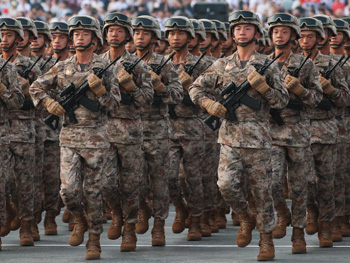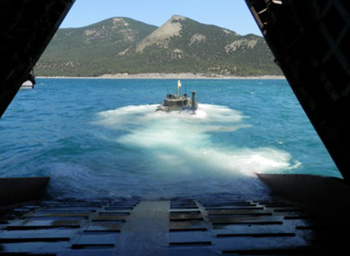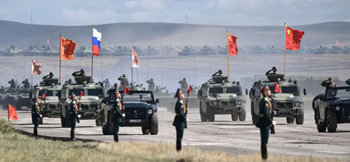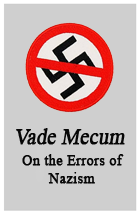International Affairs
 |
 |
 |
 |
 |
 |
 |
Sino-Russian Ties Prepare Taiwan Invasion
- Leaked documents confirm Russia is training and equipping Chinese airborne forces with advanced assault tactics, hybrid warfare strategies and covert operations – indicating Beijing’s potential preparations for an invasion of Taiwan.
- Russia has supplied China with 37 BMD-4M amphibious assault vehicles, 11 Sprut-SDM1 anti-tank guns and 11 BTR-MDM troop carriers – enough to equip a full PLA battalion. Russian instructors are also training Chinese paratroopers in high-altitude drops using the “Dalnolyot” system for clandestine insertions.
- Analysts note China is adopting Russia’s Crimea-style tactics (unmarked forces seizing airfields) and integrating cyber warfare, drone swarms and electronic deception – methods tested in Ukraine – to overwhelm Taiwan’s defenses.
- Given Taiwan’s rugged coastline, China may prioritize airborne assaults to seize airfields and logistical hubs before mass landings. Russian command systems and maintenance hubs in China suggest long-term collaboration to enhance PLA combat power.
- The leaks reveal a deepening “quasi-alliance” where Russia provides battlefield expertise while China supplies dual-use tech and economic support. NATO must counter this synergy before Taiwan becomes the next flashpoint.

Russia is training Chinese paratroopers
for quick military action
The cache of internal papers, verified by Kyiv’s Center for Defence Reforms and London’s Royal United Services Institute (RUSI), details Russian hardware transfers, joint training programs and command system integration dating from 2023 to late 2024. This deepening military partnership, described by experts as a “quasi-alliance,” underscores the growing strategic alignment between Moscow and Beijing amid escalating tensions with the West.
The documents outline Russia’s provision of 37 BMD-4M amphibious assault vehicles, 11 Sprut-SDM1 self-propelled anti-tank guns and 11 BTR-MDM troop carriers – enough to equip a full People’s Liberation Army (PLA) airborne battalion. Additionally, Russian instructors will train Chinese paratroopers in high-altitude drops using the “Dalnolyot” parachute system, designed for clandestine insertions of special forces.
Oleksandr Danylyuk, an associate fellow at RUSI, noted that these tactics mirror Russia’s 2014 Crimea operation, where unmarked paratroopers seized key airfields before reinforcements arrived. “This suggests China is studying Russia’s hybrid warfare playbook,” Danylyuk said. Jack Watling, another RUSI analyst, added that the PLA is “pursuing a systemic approach to expand their options,” particularly for contested environments like Taiwan.
Strategic implications for Taiwan & beyond

Russian amphibious assault vehicles given to China
Joshua Arostegui of the U.S. Army War College emphasized China’s interest in Russian command systems: “Understanding how Moscow coordinates complex airborne operations is invaluable for the PLA.” The documents also reveal plans for cyber warfare, drone swarms and electronic deception to overwhelm defenders – methods Russia has employed in Ukraine.
A warning to the West
“The leaks highlight the symbiotic relationship between Russia and China,” Brighteon.AI‘s Enoch said. “Moscow provides battlefield expertise, while Beijing supplies dual-use technologies and economic lifelines amid Western sanctions.” Russian President Vladimir Putin’s reliance on Chinese leader Xi Jinping has grown since the Ukraine invasion, with China leveraging Russian experience to accelerate its military modernization. (Related: Putin and Xi strengthen strategic alliance with 20 major deals, including landmark gas pipeline.)

Sino-Russian drills suggest a preparation to invade Taiwan
The leaked documents expose a military partnership that transcends arms sales, evolving into a shared operational doctrine. As NATO grapples with Russian aggression and China’s regional ambitions intensify, the West faces a dual challenge: countering Moscow’s destabilizing actions while deterring Beijing’s expansionism. With Taiwan in the crosshairs, the revelations underscore the urgency for a cohesive Western strateg – before the next crisis erupts.
Read other articles by Belle Carter here
Posted October 7, 2025

______________________
______________________








